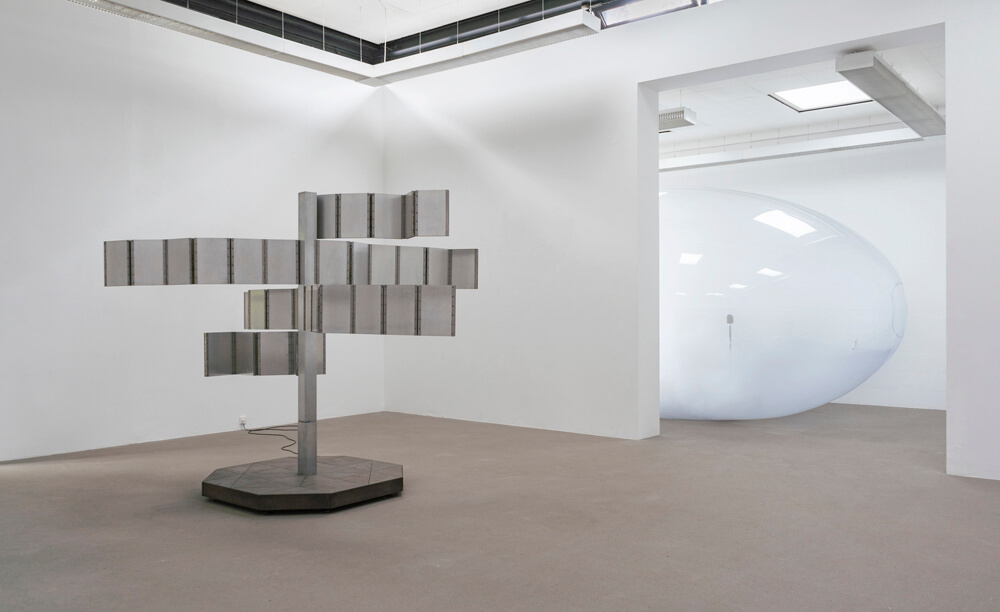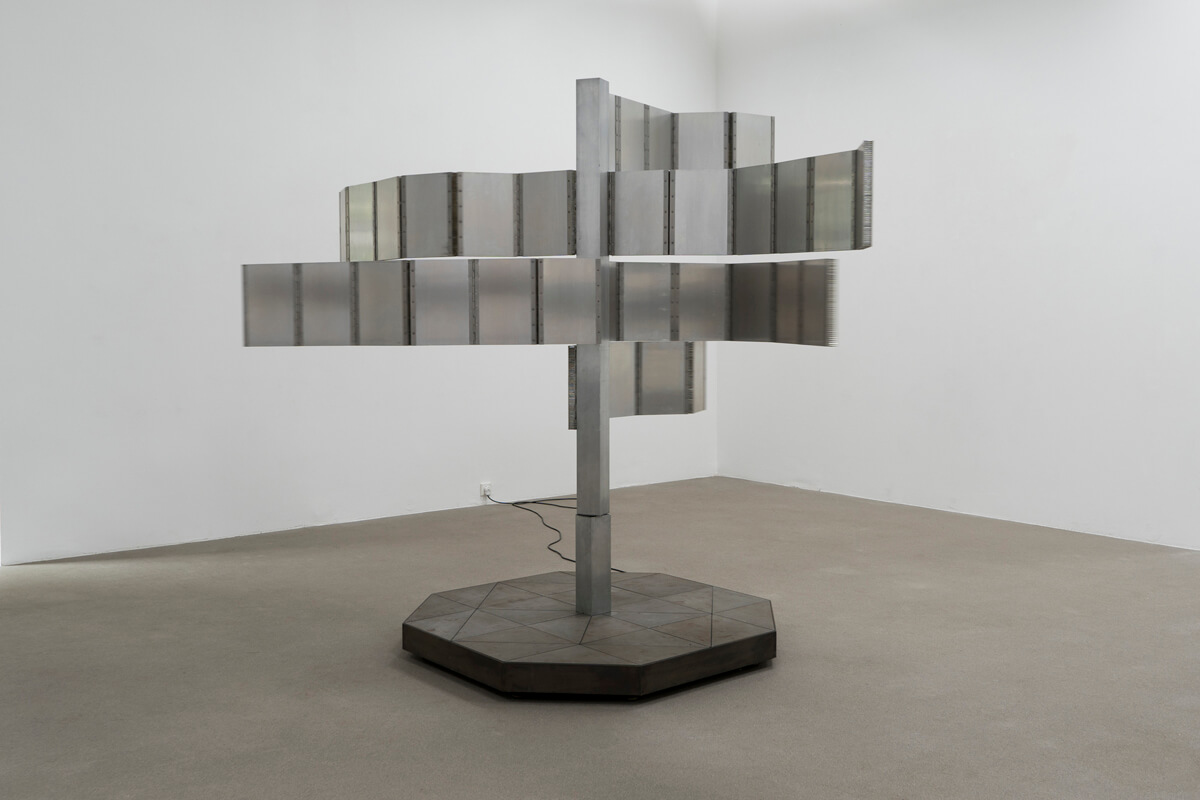Franka Hörnschemeyer
Oszilloskop, 2014
Rising from a heavy geometric base, a narrow, angular column is equipped with six wings that project into the room at different heights. Each wing consists of five or six aluminum composite panels with a honeycomb structure that are connected by hinges and can thus move independently. Irregular mechanical impulses originating from the central axis set the multi-sectioned wings in motion, making the whole structure undulate in a flowing movement that feels almost organic. The Oszilloskop reaches far out into the surrounding space, spinning by turns slowly and leisurely or with breakneck speed and then returning again to a closed form, hugging itself. Associations with choreography come to mind, the musical accompaniment consisting here of the alternately loud or soft clacking and creaking of the individual segments, which repeatedly come up on limitations and are then forced to change direction.
In his essay “On the Marionette Theater” (1810), Heinrich von Kleist vividly describes how movement always has a center of gravity, so that a marionette is governed from within. The Oskilloskop, too, is brought to life by a central power source. This has the effect of shifting in our perception the borderline between controlled and intuitive-seeming movement, as the wings dance rhythmically as if by their own volition.
Video of the art work
Video of the art work

Oszilloskop, 2014
Exhibition view Borderlines of Space
Galerie m, 2021
Exhibition view Borderlines of Space
Galerie m, 2021

Oszilloskop, 2014
Aluminium, steel, computer, engine
230 x 298 x 298 cm
Aluminium, steel, computer, engine
230 x 298 x 298 cm


